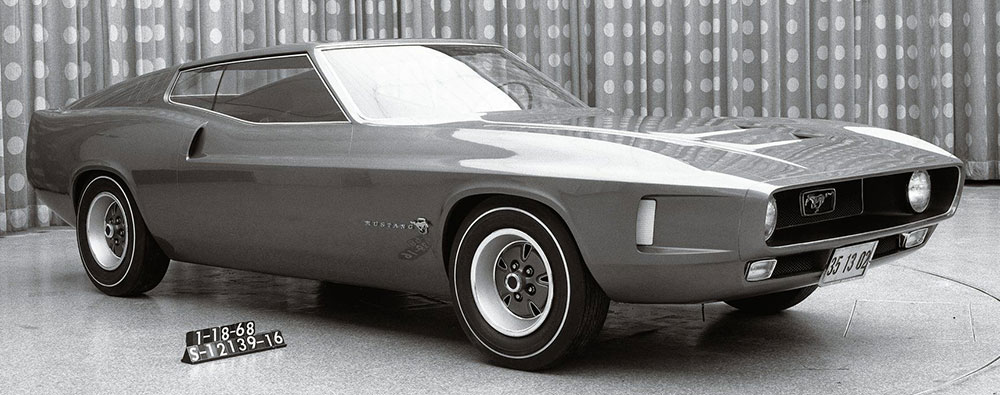
Mustang Concepts You Need to See
Ideas, styling experiments, accessories, and blunders that never made it to market (and some that did!).
By Jim Smart. Published by Mustang Monthly, May 6, 2015
Contributors: Ford Motor Co. Archives
Concept cars and wild-weird marketing experiments are the elements of dreams where automotive stylists, product planners, and dreamers can create to their heart’s content. Sometimes these wild and crazy ideas make it to market, and sometimes they wind up on the scrap pile or on some designer’s bookshelf filed under what might have been. Ford has had its share of successful and embarrassing moments behind the scenes and on the main floor of the world’s auto shows. It has also had those moments where we wish Ford had gone to market with some of these groovy ideas. Mustang began as a marketing experiment rooted in a young sales executive’s gut instincts about the baby boomer market. A youthful and tenacious auto executive named Lee Iacocca came out of Ford’s Philadelphia district sales office into Dearborn, Michigan, with his own growth vision for himself and Ford Motor Company. Iacocca told this writer in a 2004 Mustang Monthly interview that his success had always been connected to baby boomer trends and what this large generation of 70 million people wanted—and so it went.
When Ford President Robert McNamara, one of Henry Ford II’s well-groomed “whiz kids” left the company to join the Kennedy Administration in 1961 and Iacocca became Ford Division General Manager and Vice President, it opened the floodgates for a lot of new and exciting ideas for Ford Division. For McNamara, automobiles were utilitarian transportation and nothing more, hence Ford’s stodgy image and rides like the Falcon and Custom 300 sedans.
Lee Iacocca thrust his dreams and visions into his new job as head of Ford Division, fiercely determined to rid Ford of its vanilla image. He launched the Total Performance campaign mid-year 1963 with a number of exciting introductions, like the Falcon and Galaxie fastbacks, the FE series 427 and 289 High-Performance V-8s, Falcon Sprint, and an aggressive entry back into motorsports around the world. With all this public image hoopla came a string of exciting concept cars and ideas designed to give Ford a hairy-chested image.
According to Donald Farr’s excellent book Mustang—50 Years there was a collective effort known as the Fairlane Committee consisting of Hal Sperlich, Frank Zimmerman, Walter Murphy, Sid Olson, Robert Eggert, Chase Morsey, Jacque Passino, and John Bowers. These gentlemen met for several months off-site in secret to come up with a youth market car. It had to be affordable, practical, and exciting—lots of pie in the sky ideas, including a battery of two-seaters. However, Iacocca wanted volume—100,000 units. Two-seaters were never going to achieve those numbers.
Ultimately, Iacocca became anxious and frustrated, choosing to move this effort off dead center. He held a design competition among the three Ford Motor Company in-house studios—Ford, Lincoln-Mercury, and Advanced Design in July of 1962. The Ford Studio design team of Joe Oros, Dave Ash, Gale Halderman, and Charles Phaneuf came up with the winning “Cougar” clay that eventually became Mustang.
Before you are a number of ideas born of Ford Design and product planners with a lot of imagination. Some made it. Some did not. Some were good ideas while others were terrible. Here are a few of them.
As Mustang enthusiasts, we’re always enthralled with intriguing ideas and concepts that never made production, but fuel the imagination. Unfortunately, a good many of these ideas are canned by financial and management types who perceive they’re something no one wants. In the end, it boils down to the decision makers with very little of it rooted in what car enthusiasts want. And in the end, it has to be something that automakers believe will sell, which often brings down the curtain on what excites our senses. And yet just imagine: what if Henry Ford II had said no to Mustang—which was in itself a styling and marketing experiment?
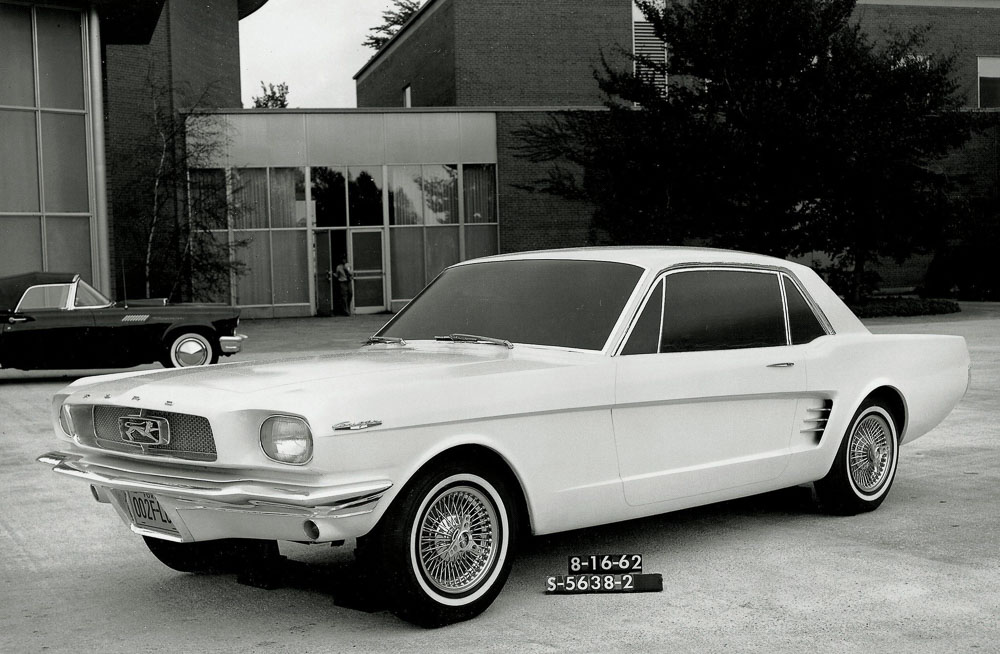
In 1962, Ford Division General Manager and Vice President Lee Iacocca staged a design competition among the three Ford corporate studios for the Sporty Ford Car Project. This was the winning entry—Ford Cougar from the Oros/Ash/Halderman Ford studio. Ford Cougar was hands down the winning subject that ultimately won the hearts of millions.
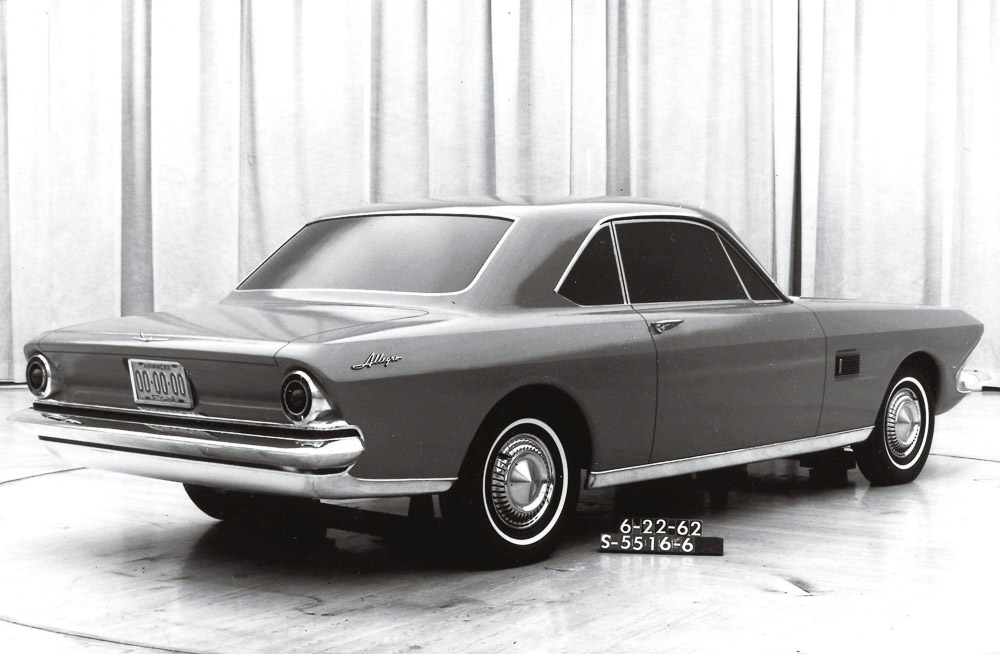
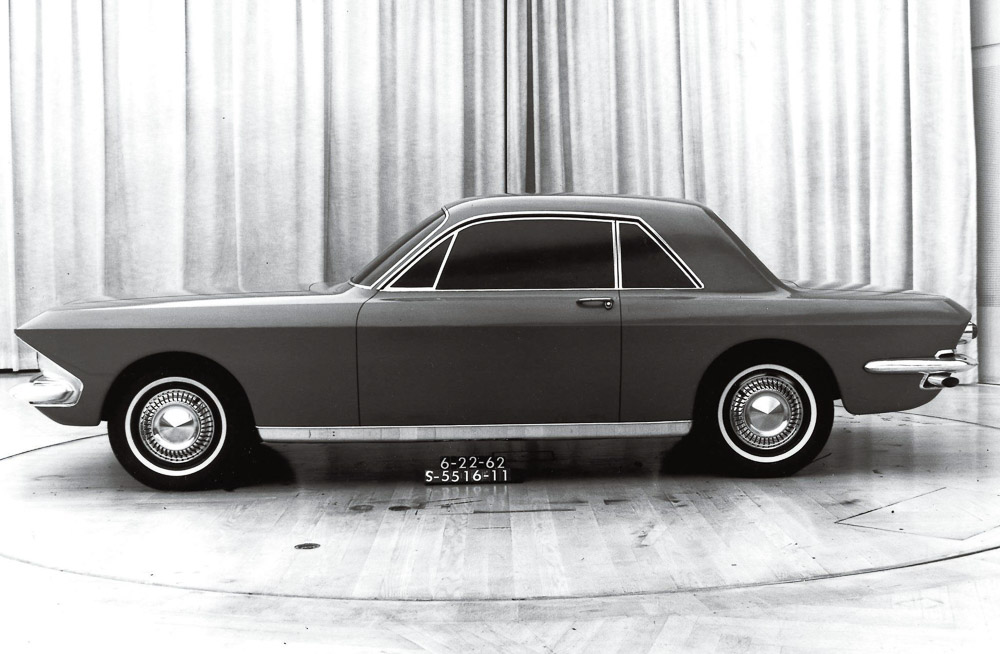
Advanced Design under the direction of Gene Bordinat came up with the Allegro as its answer to the Sporty Ford Car Project, a short-deck, long-nose proposal that might have become Mustang. We like the notchy greenhouse and slippery hardtop lines.
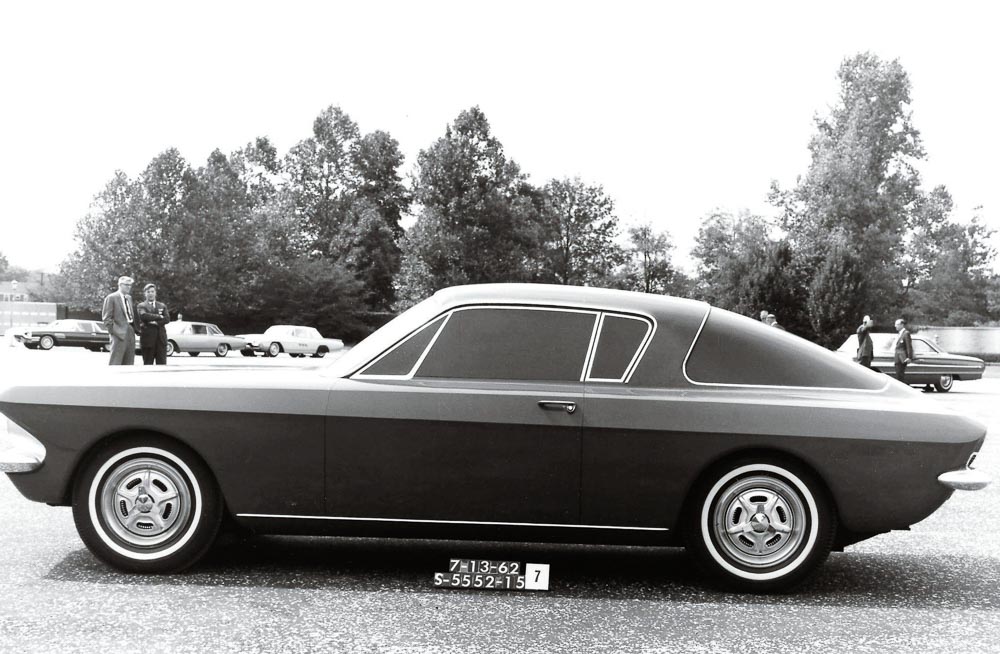
Here’s the Allegro fastback, which bears a striking resemblance to the Valiant-based Plymouth Barracuda, which arrived around the same time as Mustang early in 1964. Allegro never got the nod from Ford brass in any form.
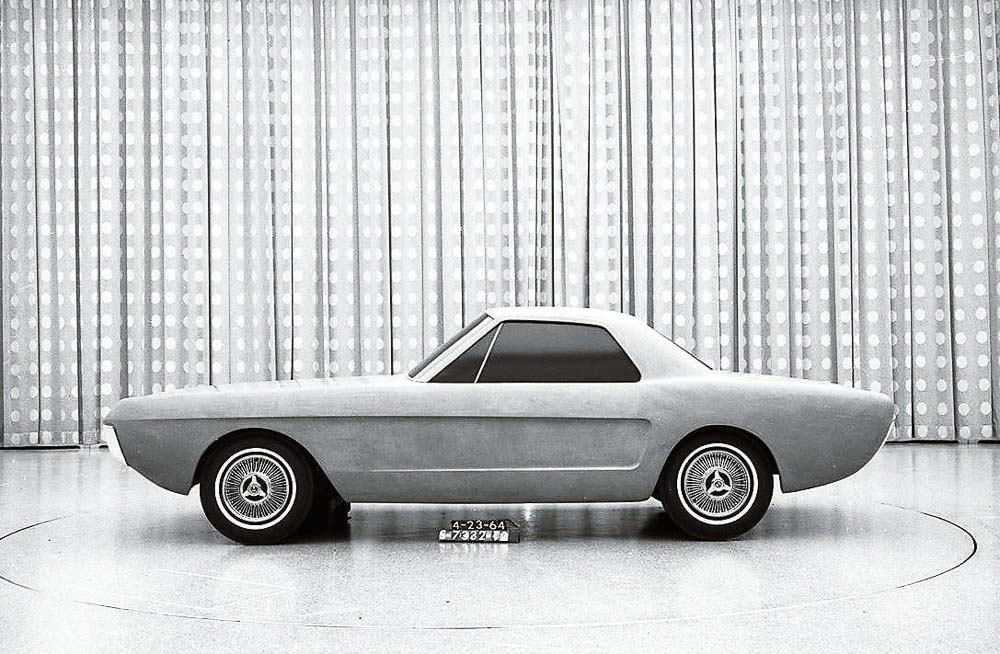
By April 23, 1964, Mustang had already taken the world by storm. However, Ford product planners and stylists were already looking ahead to how the Mustang could be more varied to meet the needs and wants of more buyers. Enter this Mustang two-seat concept clay, which was a sexy slider with its slippery roofline and shorter wheelbase. Ford would learn, much as it did in the ’50s with the Thunderbird, that the two-seat market was very limited and dominated by Chevy’s Corvette and European entries, like the Jaguar, MG, Austin, and a host of others.
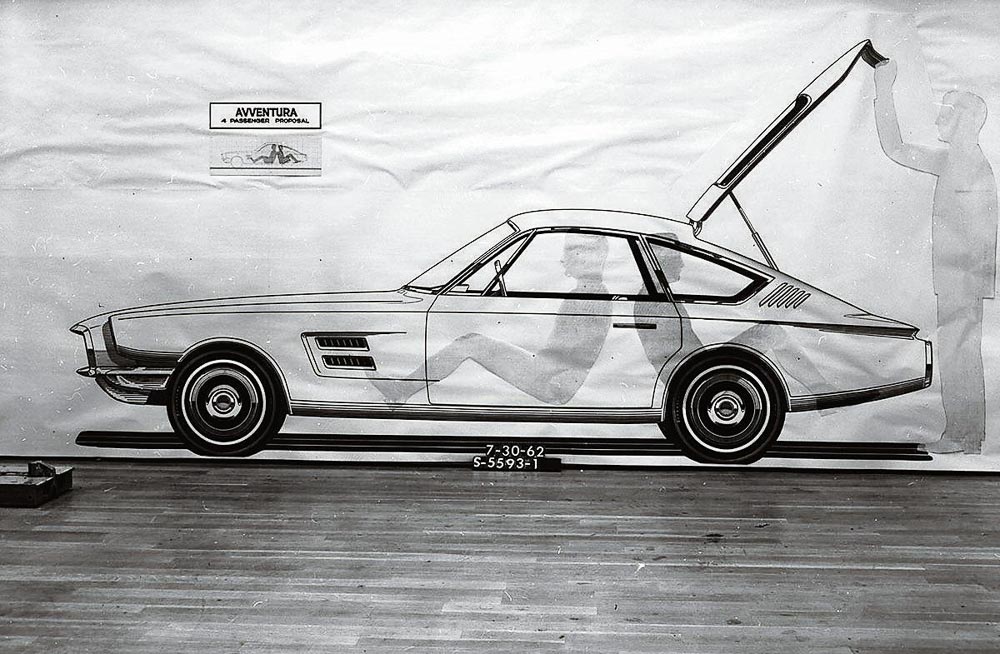
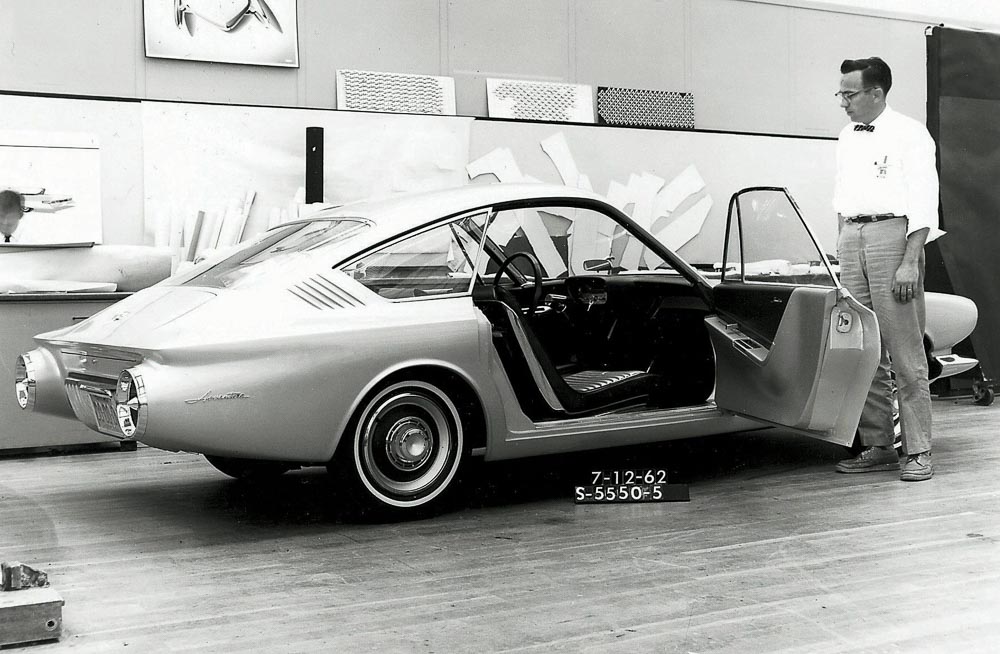
Ford Avventura was yet another sporty short-deck/long-nose entry that eventually became known as Allegro. Although Avventura was a sporty car that could have been easily mass produced, it was not a practical car for a volume market. The Avventura/Allegro was basically a two-seater for all intents and purposes with room for perhaps one person in back with an aft-facing seat. Iacocca was seeking a volume car with room for four.
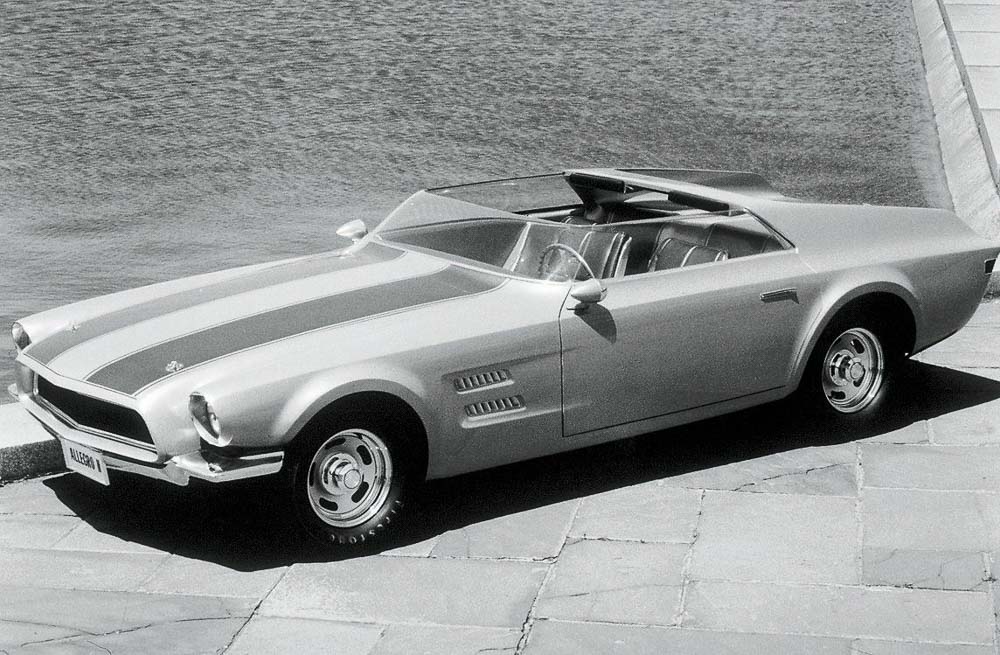
The Ford Allegro concept kept evolving throughout the ’60s. This is the ’67 Allegro II—Ford’s continuing effort to get into to the Corvette/European-dominated two-seat sports car market. Like every other Ford two-seat concept car project, Allegro quietly faded away.
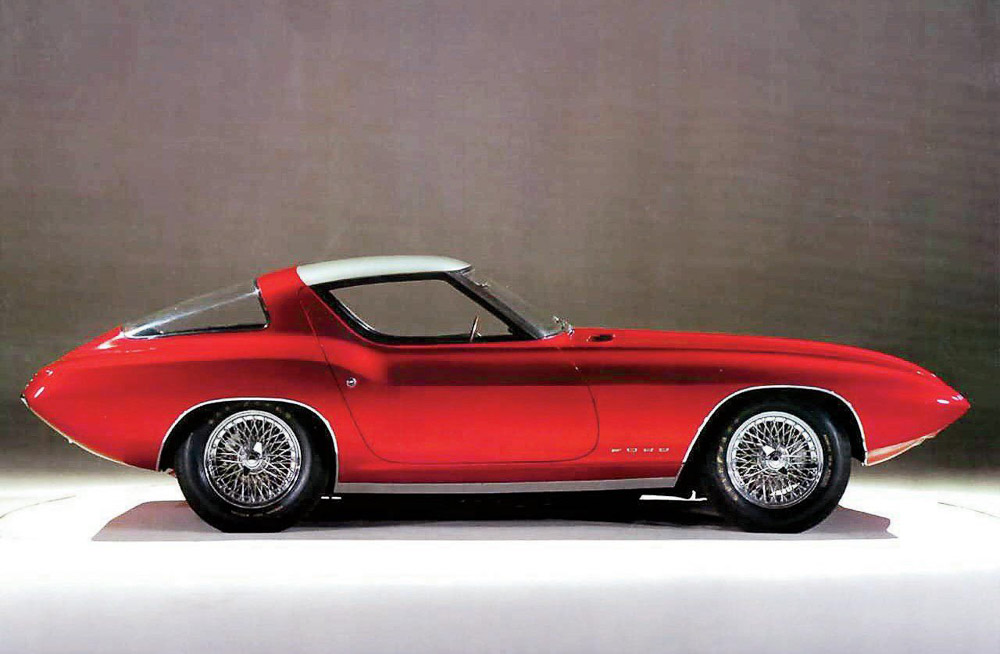
Ford’s Shelby-inspired Cougar II two-seat concept was another whack at the sports car market with a powerful V-8 and lightweight body. Ford management said no.
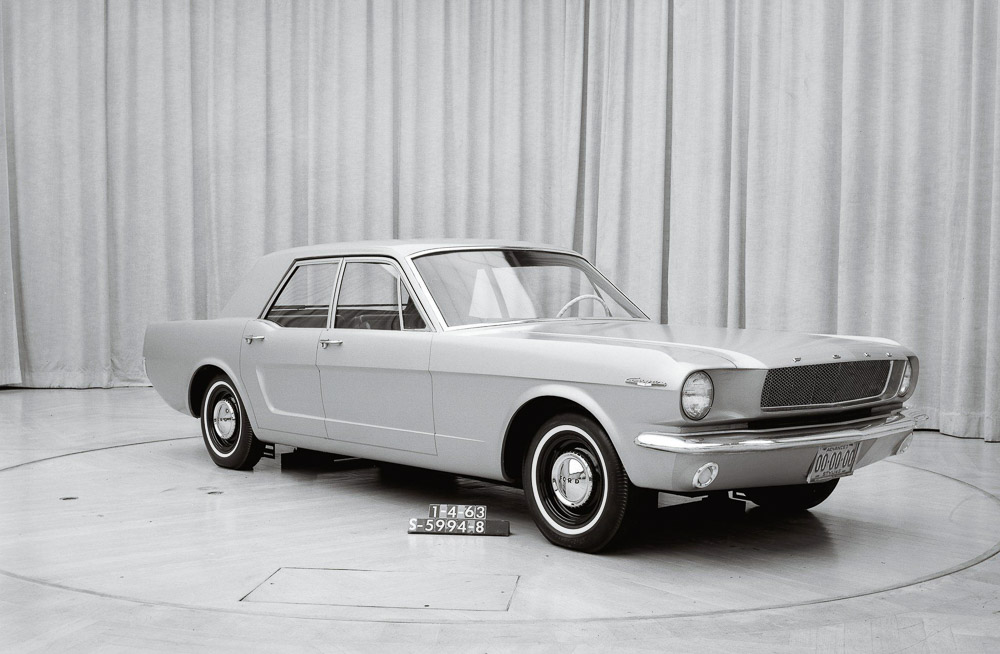
Two-seater Mustangs, station wagons, and yes four-doors early in 1963. We’re glad this one never made it.
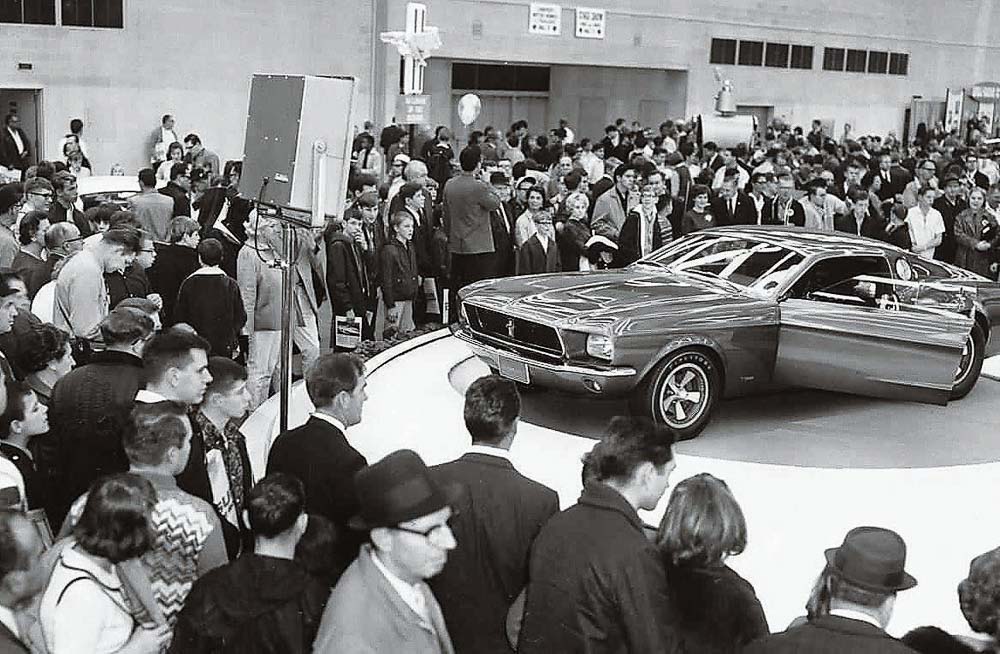
Mach 1 debuted at the Detroit Auto Show late in 1966 before the press and excited onlookers. This car went through a number of minor changes before and after going public. It is unknown whatever happened to this car, but we suspect it was destroyed.
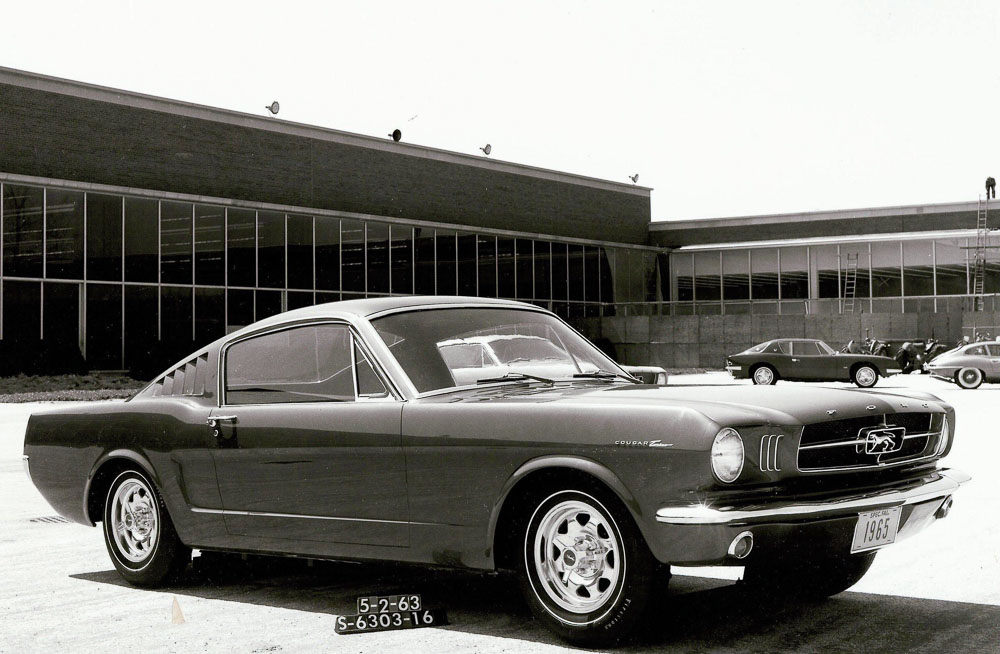
Here’s an early fastback clay with the words “Cougar Torino” in script. Chief Ford stylists Joe Oros and Dave Ash wanted the Cougar name badly, affixing it to every styling clay they could and even driveable prototypes. In the end “Mustang” won the toss.
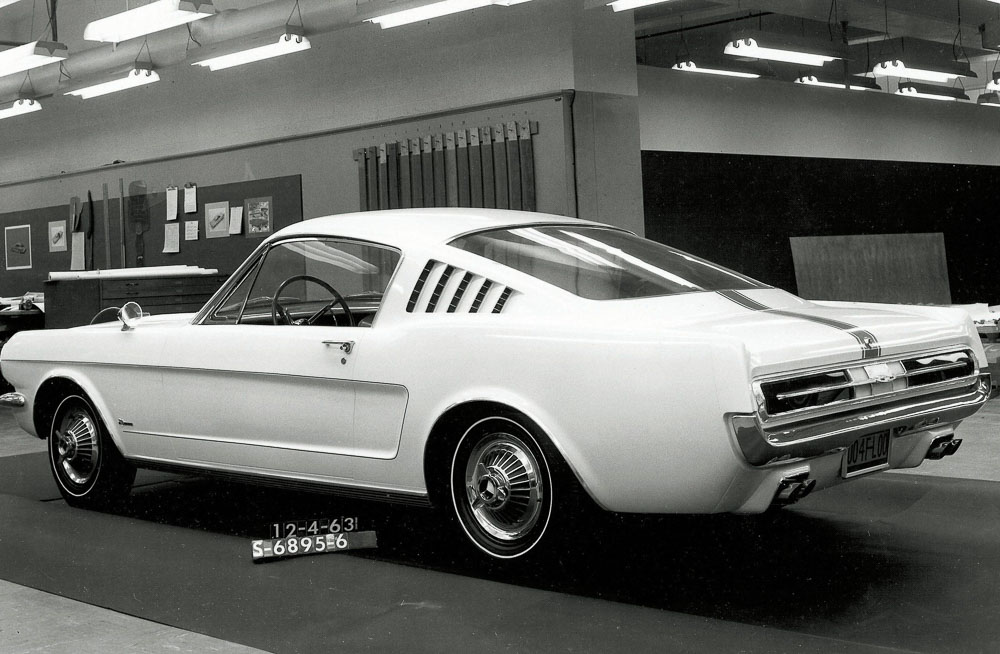
Here’s a well-dressed “Torino” fastback clay with quad exhausts, full width taillights, a fuel filler door, and really snazzy full wheel covers. None of these cool mods made it.
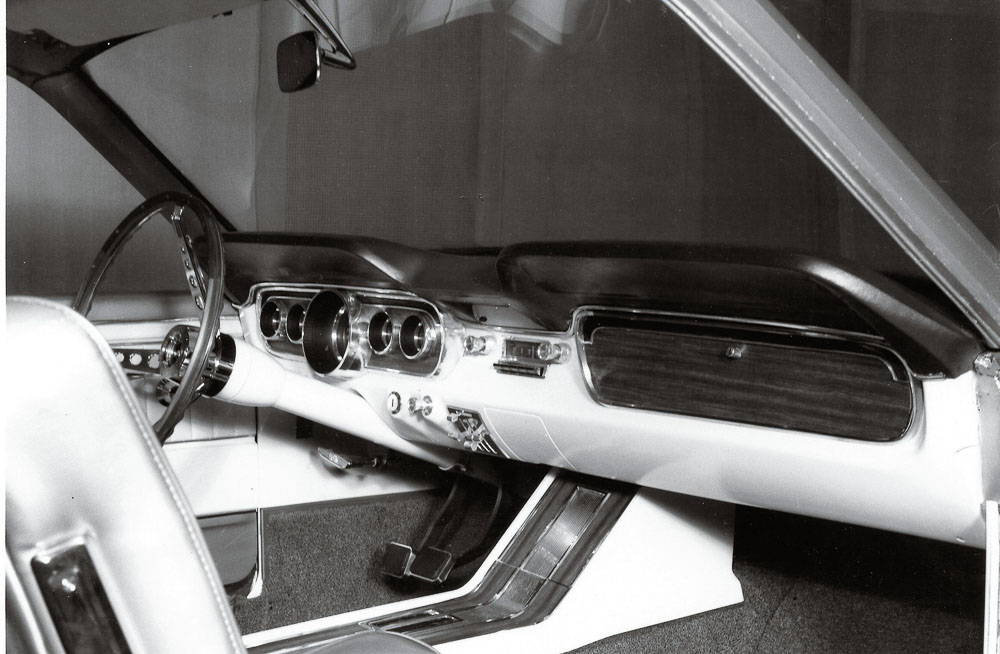
This seating buck demonstrates what might have been, like the large-speedometer five-dial instrument cluster, stainless dash pad molding, and those flat pedals trimmed out in stainless. Not wild about the plastic-chromed brake handle.
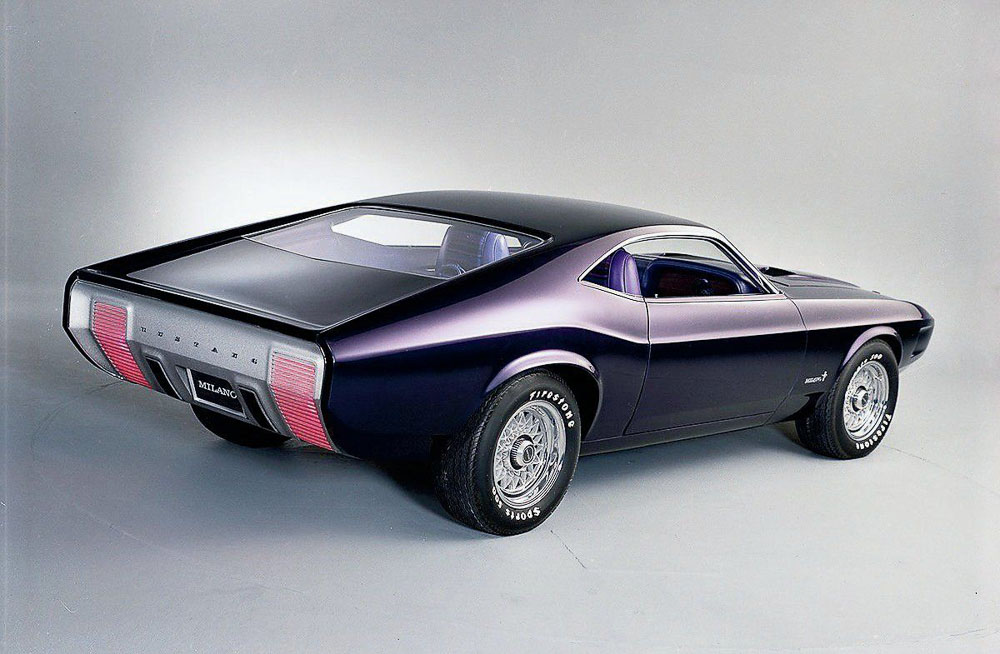
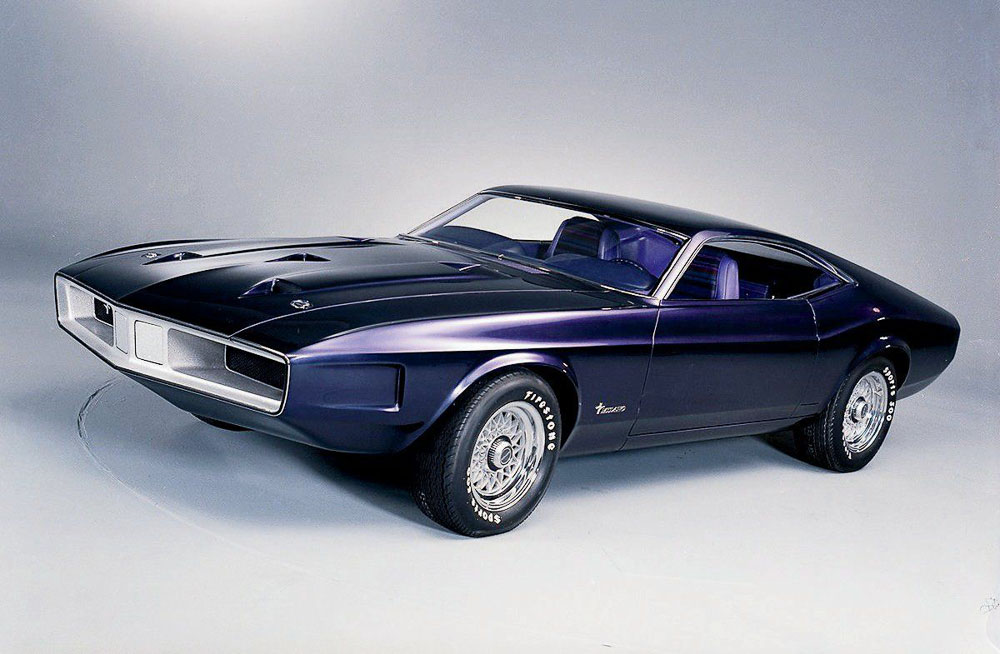
The slippery swoopy Mustang Milano bears some resemblance to Dodge Challenger and Plymouth Barracuda for 1970-1974. Note the Shelby-esque elongated front end. Inside, it’s the ’69-’70 Mustang with wild colors we wish had made it.
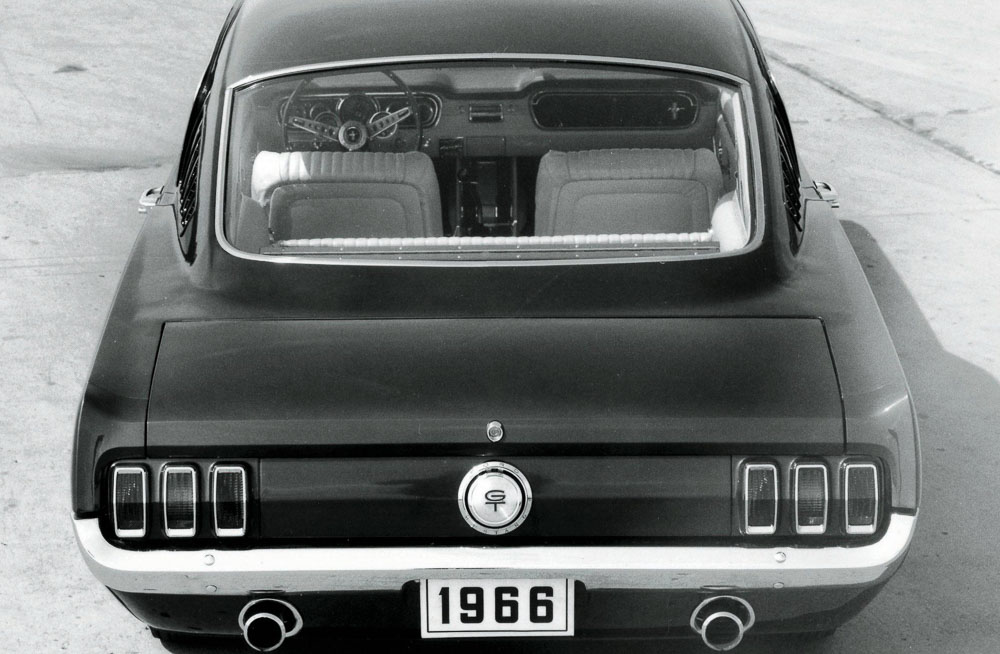
Here are the three-element ’66 taillights and pop-open gas cap up close. A longtime friend of ours in Detroit, Chris Richardson, found a set of these prototype taillights at a Dearborn garage sale—one of them with styling clay still on them.
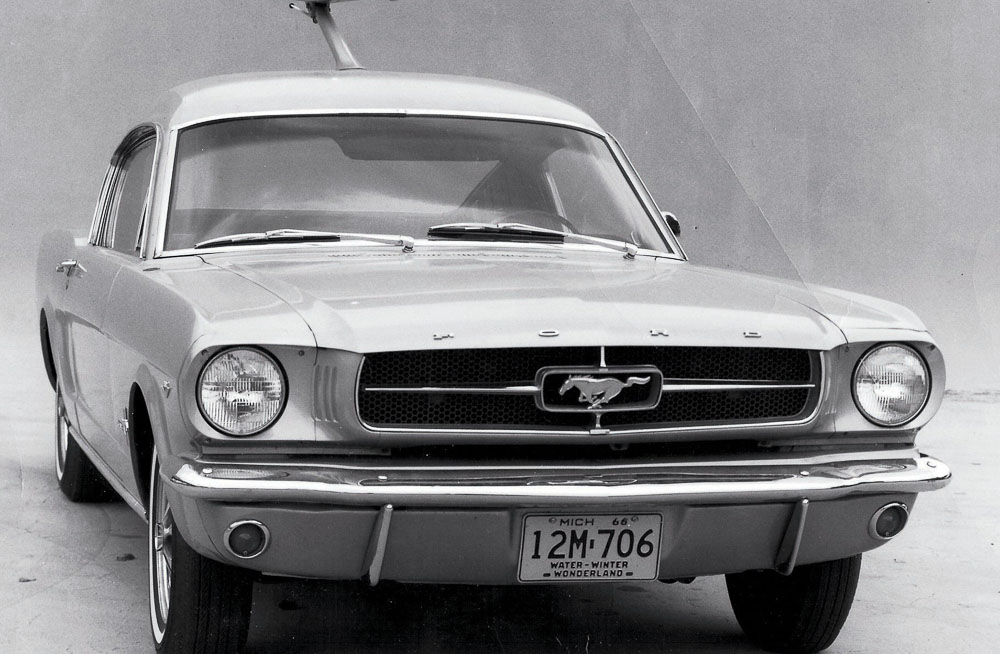
We’ve spent a lot of time here at Mustang Monthly trying to figure out what this is and you know we still don’t know? It is a ’65 Mustang fastback with a high roofline and a bizarre winged component apparently designed for great TV reception. Check out the body plug in the fender where the radio antenna would normally go. We’re glad this one didn’t make it.
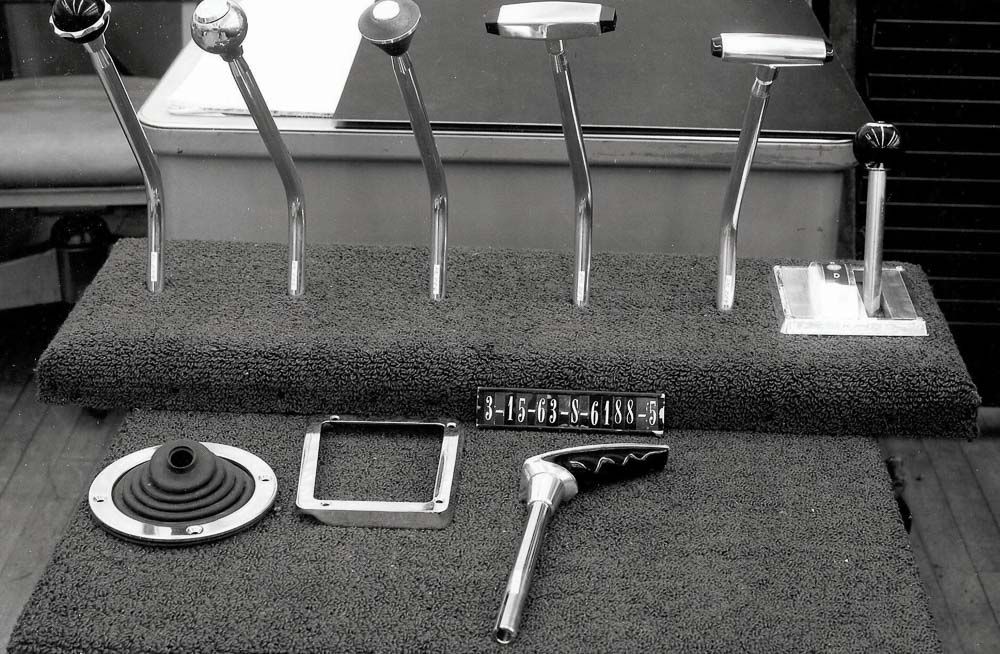
An array of fireplace mantle art for the family room—shifter handles—most of which didn’t make it—thank goodness.
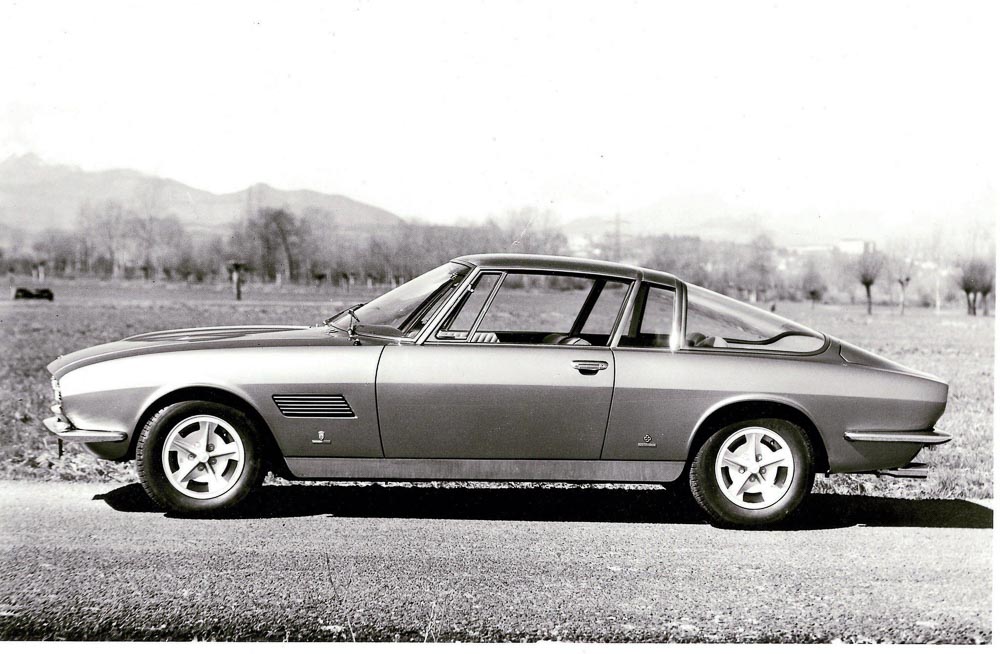
This is the Bertone Mustang concept car commissioned by Automobile Quarterly in 1964. Another styling exercise where they thought they could improve on Mustang. This was a Dearborn Assembly Plant produced 289 High-Performance “K” car bucked late in 1964 and shipped across the Atlantic to Bertone in Italy for this styling exercise. It came to New York for the auto show in 1965 and was shipped back to Italy and hasn’t been seen since.
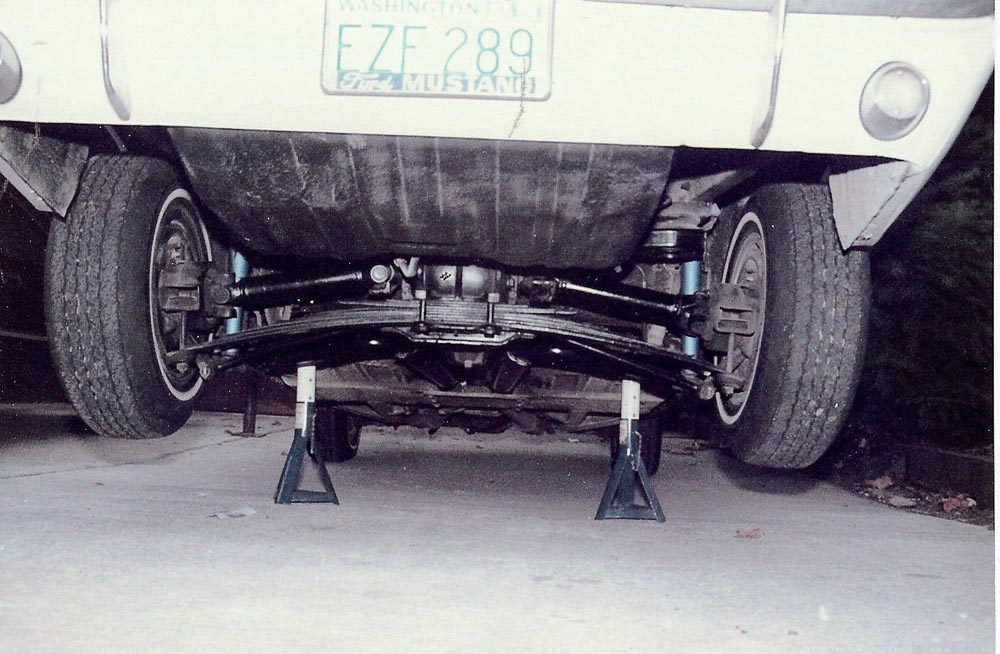
If you believe independent rear suspension arrived in the SVT Mustang Cobra, you’re off by approximately 35 years. Ford built three IRS engineering mules in 1964, which were consecutively numbered and built for Ford’s use. IRS was deemed too expensive and the three cars were destroyed. However, Shelby American built at least one IRS car as a development mule. IRS was considered an expensive option at $200 and Shelby dropped the project. Last we heard from the owner in 1986, the car was in Portland, Oregon. (That looks EXACTLY like a Corvette C2 Independent suspension to me—Gary)
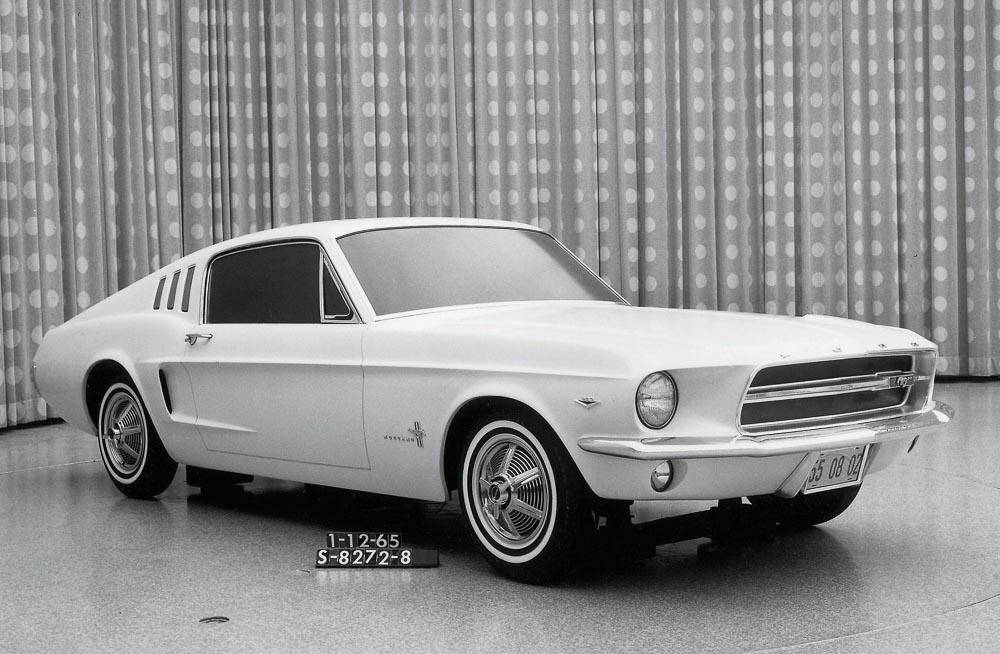
Here’s one of many ’67 Mustang concept clays considered early in 1965. Those seemingly functional side scoops would have been nice. And then there’s that pesky issue called cost. These cool styling nuances never made it.
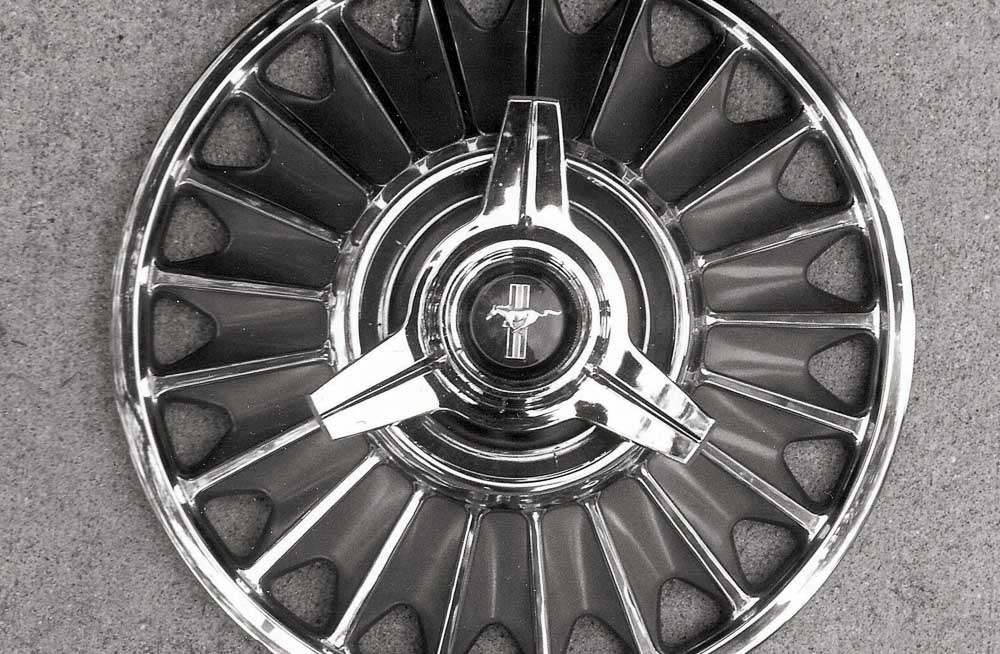
A buddy of ours who is retired from Ford, Jim Gillespie, has a set of ’67 full wheel covers with spinners, which never went into production due to changes in federal vehicle safety laws. At least one set survives.
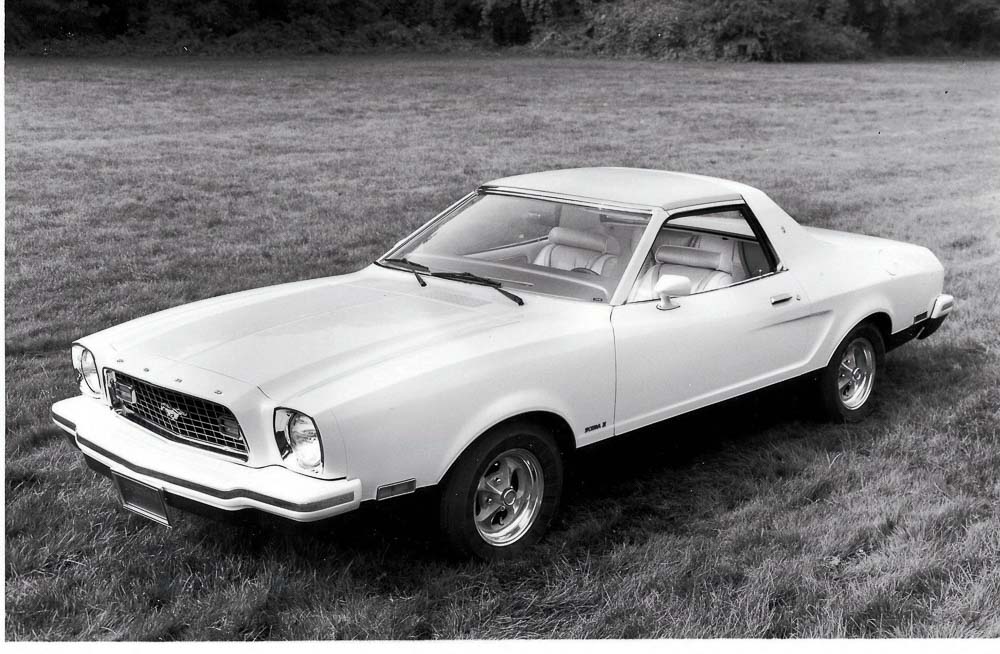
Check this out—the ’74 Mustang II Sportina for those who wanted to live life on the wild side. It was another two-seat Mustang endeavor that never saw production.
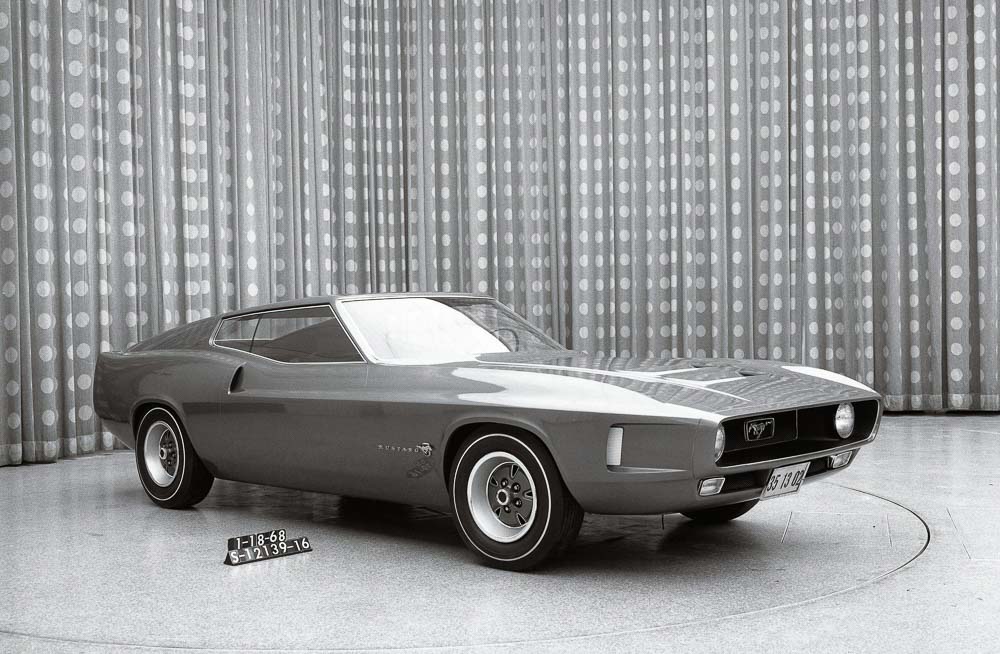
As you may have guessed this is a ’71 Mustang styling concept that never made it. As we understand it from Ford insiders who were there at the time, this is basically the Mustang styling clay Ford President Semon E. “Bunkie” Knudsen approved for 1971, though this has never been confirmed officially.
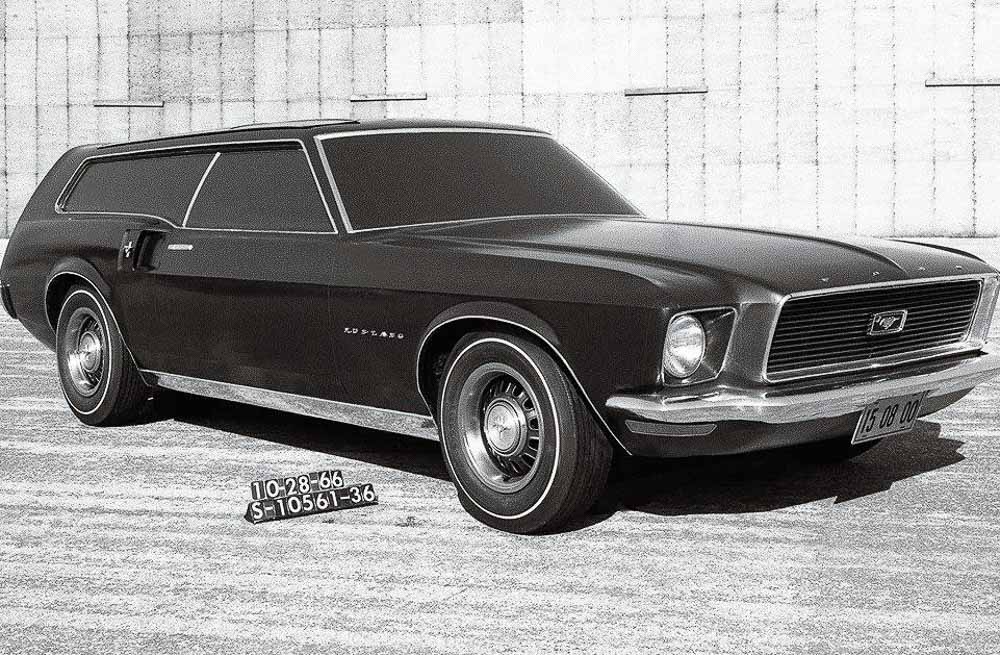
As frustrated Mustang enthusiasts who wish we had our hands on the throttle at Ford, it is our wish Ford had done one of these—a Mustang station wagon. Fifty years later, we still want one. You get a hint of what was coming for 1969 with the small pseudo brake-cooling scoop in the high-shoulder quarter-panel. In our simple minds a Mustang wagon was a no brainer. Just do it, Ford.
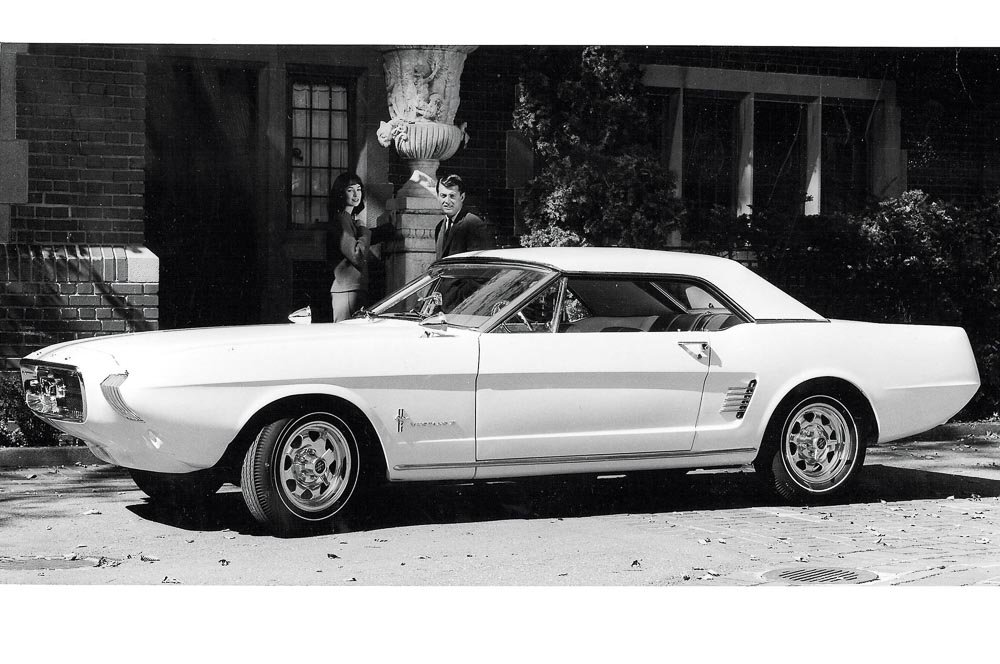
As Mustang enthusiasts, we’re always enthralled with intriguing ideas and concepts that never made production, but fuel the imagination. Unfortunately, a good many of these ideas are canned by financial and management types who perceive they’re something no one wants. In the end, it boils down to the decision makers with very little of it rooted in what car enthusiasts want. And in the end, it has to be something that automakers believe will sell, which often brings down the curtain on what excites our senses. And yet just imagine: what if Henry Ford II had said no to Mustang—which was in itself a styling and marketing experiment?
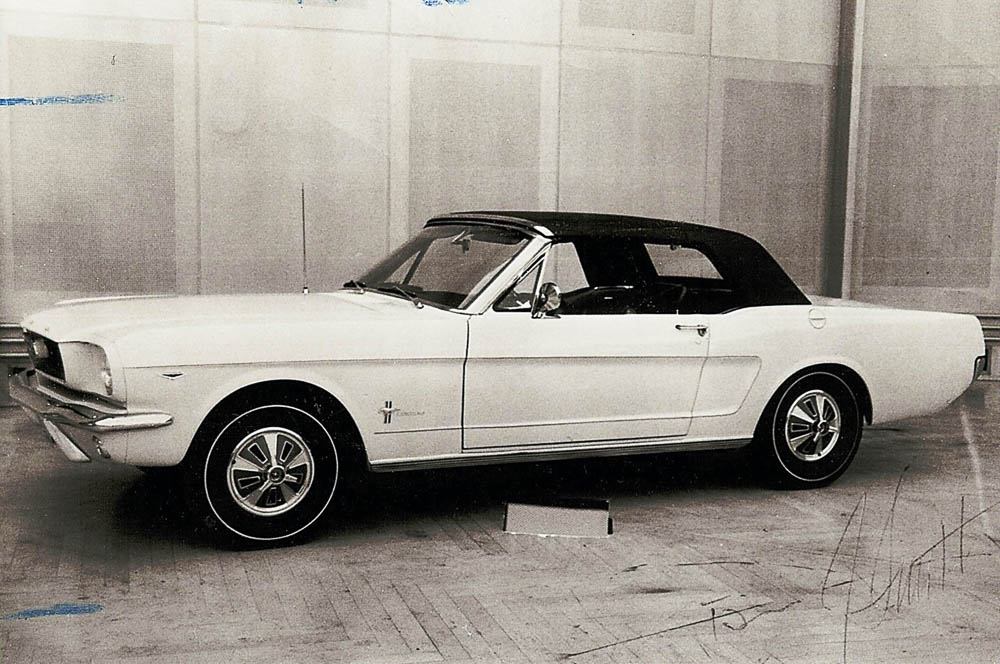
This is the 1966 Mustang Skyliner 2+2 retractable that didn’t happen. Former Ford stylist Ben Smith conceived this idea for a Mustang retractable with a manual roof that folded into the trunk. Seemed like a great idea for those who wanted the benefits of a convertible and a hardtop in one. He presented the idea to Lee Iacocca who didn’t care for the idea. Ben went on vacation after Iacocca viewed this concept. When he returned, the car was gone without a trace. Later on in the ’90s, Smith conceived a classic Mustang retractable kit, which is available from Mustangs Plus in Stockton, California.

I never owned a mustang, but kind of wish I had.
Interesting photos of Mustang proposals. Having been a member of the ’65 Ford Mustang Styling Team (I worked on the interior – instrument panel, console, gear shift, Rallye-Pac, etc.) I find some of these photos merely side studies, but all quite interesting even today.
The designers, at Ford Design Center (Styling), pretty much agreed the roofline of the first production fastback Mustangs really sucked. The high point of the silhouette was placed too far forward making the greenhouse look like it had hit its head on the garage door pulling into the garage. Still think it sucks.
With regard to the 4door Mustang and the station wagon version: they were just experiments to see what they looked like. I’m glad they didn’t make it into production. Proportions of the sedan like Mustang were awkward and I think that must have been how management saw it, too. The station wagon version was an ill conceived idea and it would have only damage the image of Mustangs had it been produced. No car company ever wants to blur the image of what they are trying to sell and both of these would have done that. Sorry to those who think these were cool. They were neither creative nor appropriate, especially the station wagon version.
On the interior; I don’t recall any of those gear shift designs shown and hope I was not part of any of them. I/P I’m happy with, but was only a lessor contributor to the overall. The Rallye-Pac was mine and I’d love to do it over and make the design better. One thing I did do, was get the Company to agree to my idea of a 24 hour clock face. I’d just returned from nearly 2 years in the Army and it seemed a natural to me.
Thanks for showing these many interesting photos! I hope everyone enjoyed them.
Phil Payne
Thanks, for the article. The original 65-66 2+2 Mustang fastback has always been my favorite Mustang design. It is the one I would own, if I was able to buy one.
Thanks, again for a great article.
My dad Fritz was a modeler in Ford Styling from 1953-1969. A lot of his work was in Truck and Advanced studios. His crew modeled the original Mustang 2-seater concept show car that used the V-4 Taunus engine.
One of his colleagues designed and sculpted the trademark Mustang horse that we still see. His name was Waino Kangas.
My father George Schumaker was in the advanced studio working on Mustang in 1963. He is quoted in the Holls book. Anyway, his sketches were the ones leading to the fastback. These are the only two that survive years of abuse. I donated them to the Petersen years back. Funny to hear Phil Payne say no one in the studio liked the fastback. Guess they didn’t choose his sketches. Phil can be such a Payne… old joke. Actually my dad did say the roof got too high in order to get the fastback look while holding head points in the rear.
And here is a pic of a cast of the pony sculpture used for the grille badge etc. It was done by a sculptor named Charles Keresztes. My dad brought this casting home from the studio in the 70’s. Dug it out of the trash. We treated it like a toy until one day I realized it mattered and saved it. I just donated it to the new Mustang Museum opening in North Carolina.
We here in Honda R&D enjoy your site. A lot of ex-Detroiter studio guys here.
Regards, Eric Schumaker
Sorry Phil but I think the fastback of the era was the most well proportioned of any of the later Mustang or other makes. What was unique was the nice plan view taper in the rear and was at the time, a very unique treatment of the B pillar.
Interesting to see these vintage proposals, always enjoyable. Somewhere online recently I recall seeing a modern-day Mustang 4-door workout, as the only sedan that Ford North America might build. I suspect it will not see the light of day, but who knows.
Sorry, but you guys miss the point. I never complained about the proportions of the fastback roof to the body. It works well.
The error occurs near the windshield header where it should be moved just a bit farther to the rear.
Eric, I remember your dad well and with considerable admiration (he was also my boss at one point and was great) but the high point on the greenhouse was moved from where George had meant it be another manager. He would not have put it where it wound up.
Look at my note, I never said the designers in the studio all didn’t like it, it was many of us others who didn’t like it. ALSO,
If you read my words, I was working on the interior at that time not the exterior. They couldn’t choose my sketches for the roofline as I didn’t do any, I was working on the instrument panel.
Furthermore, I was there at the time neither Eric or Ron were and weren’t part of those conversations so their comments are meritless. It isn’t wise to speak “Ex Cathedra” when your info is only second hand.
Eric, you are absolutely correct about Charles Keretzes doing the Mustang horse. Your attempt at humor about my last name makes me wonder if you are still using someone’s old stuff.
Wow Eric you really lit a fire under ole Phil Payne there.
You always had a knack for getting under people’s skin.. I miss your sense of humor. Our business has gotten too PC these days
Hi Eric! Nice to know you family connections and history. We do have a Facebook group for Chrysler (and AMC) Design where people are welcome to post their memories and photos. Please join us. Phil Payne, too! 🙂
This was very interesting to look through. Thank you for putting it together. My Grandfather, Damon C. Woods was the Chief Stylist of the Interior of the Mustang in the early years. He sadly passed away in 1968 in a car accident and I only occasionally see credit for his efforts. I can send you some information, if you would like.
Phil Payne, I imagine you knew my grandfather. I would love to connect.
Fascinating article. Gary has been kind enough to post some sketches that I inherited from my father. One in particular relates to this article. It represents late 60’s sketches of the Mustang (with a GT40 in the background). Not sure how to post pics here but the Dean’s Garage post is here –> http://www.deansgarage.com/2021/ford-studio-renderings/